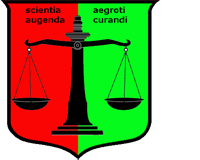Professor Dr. med. Christian ScharfetterDept. of Psychiatry, Psychotherapy & PsychosomaticsPsychiatric Hospital, University of Zurich |

|


|
Genetic Diversity in Families with AlcoholismIn the case of genetically complex disorders, like alcohol dependence, the standard phenotype-to-genotype research strategy may not readily lead to the detection of "signals" if the contributions of single loci are small, and if there exist significant interactions between loci. In contrast, the genotype-to-phenotype strategy has its main focus on oligogenic, interacting models that evaluate the within-family similarities of high-dimensional genetic feature vectors. In this approach, the power of detecting "signals" increases with the genetic variation that arises from the existence of various alleles at the different loci, and that is expected to be greatest when there are many alleles at a locus, all at equal frequency. COGA Study: Affected versus Unaffected SibsUsing genotypes of 280 marker loci on the 22 autosomes of 105 alcohol-dependent probands, their affected and unaffected sibs, as well as their parents, we iteratively constructed a genetic similarity function that enabled us to quantify the inter-individual genetic distances d(Xi,Xj) between feature vectors Xi, Xj made up by the allelic patterns of individuals i, j with respect to n loci L1, L2, .. Ln. Based on this similarity function, we investigated the sib-sib similarities which are expected to deviate from "0.5" in affected sib pairs if the region of interest contains markers close to disease-causing genes. The reference value "0.5" was derived by evaluating the parent-offspring similarities which are always "0.5", irrespective of the status of affectedness of parents and offspring. Additionally, we determined the eigenvectors that optimally represented the genetic variation ("diversity") associated with the feature vectors. Genetic DiversityIt turned out that (1) typically 3-4 eigenvectors explained two thirds of the genetic variation inherent to the 8-20 polymorphic markers of each autosome, and (2) several marker configurations on chromosomes 1, 3, 7, 15 and 17 reproducibly discriminated (p <0.01) probands and unaffected sibs on the one hand, and affected and unaffected sibs on the other ("affected vs unaffected"), while no such differences were found between probands and affected sibs ("affected vs affected"). References
Stassen HH, Begleiter H, Porjesz B, Rice J, Scharfetter C, Reich T: Structural decomposition of
genetic diversity in families with alcohol dependence. Genetic Analysis Workshop 11: Analysis
of genetic and environmental factors in common diseases. Genetic Epidemiology 1999; 17:
325-330
Stassen HH and Scharfetter C: Integration of genetic maps by polynomial transformations.
Am J Med Genetics B 2000; 96: 108-113
Stassen HH, Bridler R, Hägele S, Hergersberg M, Mehmann B, Schinzel A, Weisbrod M, Scharfetter C:
Schizophrenia and smoking: evidence for a common neurobiological basis?
Am J Med Genetics B 2000; 96: 173-177
Hoffmann K, Stassen HH, Reis A: Genkartierung in Isolatpopulationen. Medizinische Genetik 2000;
12,4: 428-437
Stassen HH, Scharfetter C: Oligogenic approaches to the predisposition of asthma in ethnically
diverse populations. Genetic Analysis Workshop 12: Analysis of genetic and environmental factors
in common diseases. Genetic Epidemiology 2001; 21(1): 284-289
Stassen HH, Hoffmann K, Scharfetter C: Similarity by state/descent and genetic vector spaces:
Analysis of a longitudinal family study. Genetic Analysis Workshop 13: Analysis of longitudinal
family data for complex diseases and related risk factors. BMC Genet 2003; 4, S59: 1-6
Stassen HH, Bridler R, Hell D, Weisbrod M, Scharfetter C: Ethnicity-independent genetic basis
of functional psychoses. A Genotype-to-phenotype approach. Am J Med Genetics B 2004; 124:
101-112
Berger M, Stassen HH, Köhler K, Krane V, Mönks D, Wanner C, Hoffmann K, Hoffmann MM, Zimmer M,
Bickeböller H, Lindner TH: Hidden population substructures in an apparently homogeneous
population bias association studies. Eur J Hum Genetics 2006; 14: 236-244
Stassen HH, Szegedi A, Scharfetter C: Modeling Activation of Inflammatory Response System.
A Molecular-Genetic Neural Network Analysis. BMC Proceedings 2007, 1 (Suppl 1): S61, 1-6
Stassen HH, Hoffmann K, Scharfetter C: The Difficulties of Reproducing Conventionally Derived
Results through 500k-Chip Technology. BMC Genet Proc. 2009; 3 Suppl 7: S66
|
|

Very similar NPL score characteristics for multiplex nuclear families ascertained in 2 independent waves ("Wave-I", "Wave-II") through index-cases with a diagnosis of alcohol dependence indicate reproducibility of vulnerability and protection loci.
Please note: important here is not the absolute size of the locus contributions
when comparing the 2 populations ascertained through index cases with a diagnosis of
alcohol dependence, but the fact that the signals are showing up at the same genomic locations
(green marks).
|
|
| [ Mail to Webmaster ] k454910@ifrg.ch |